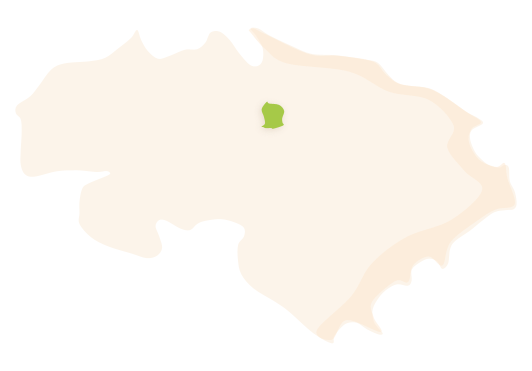Sanet i els Negrals is a village located to the north, along the central axis of the region. It is part of the historical subregion known as La Rectoria (together with Tormos, Sagra, El Ràfol d'Almúnia, and Benimeli), which spreads out around the middle course of the River Girona. The municipality is located at 83 metres above sea level, with an area of 3.9 km² and 702 inhabitants, who are known as Saneter and Sanetera.
 Sanet i els Negrals' municipal district. Surface area: 3.9 km². Population: 702 (INE data 2021).
Sanet i els Negrals' municipal district. Surface area: 3.9 km². Population: 702 (INE data 2021).HISTORY
The municipality of Sanet i Els Negrals was created by the unification of two population centres. It is located at the foot of one of the slopes of the Serra de Segària mountain range, within the sub-region called La Rectoria.
Sanet i Els Negrals are two villages of Muslim origin separated by a ravine: Sanet, also called Cenete, Zenete or Zaneta in mediaeval Christian documents, was a hill located on the banks of the River Bolata (which is another name for the River Girona). According to Gaspar Escolano, the name came from one of the African tribes called Zenetes, who were probably the first people from North Africa to settle there. In 1341, Sanet and Sagra became part of the Order of Santiago.
Negrals, on the other hand, was a peripheral settlement given by Jaume I to Raimon de Villamair in 1248 and, in 1249, to Pere Joan de Girona. Finally, in 1570 it was acquired by Llorenç Merita, whose manor house still exists today.
After the Moorish expulsion in 1609, both farmsteads remained abandoned. On February 7th, 1610, a joint charter was signed in which the lands were given to Valencian settlers from Torrent, Alcoi, Penàguila and Oliva. But it doesn't seem to have worked out well because a second charter was signed for Sanet the following year, on January 7th, 1611. As for Els Negrals, the second town charter was granted on August 31st, 1611, to several residents of Pego, with the Pasqual family being the most numerous. It seems that, over time, various Majorcans also settled there, as evidenced by some of the surnames: Moll, Mut and Llull, which still endure to this day.
In 1820, a single village was formed called Unión Legal, but they split again in 1823 and reunified definitively in 1834.
Sanet i Els Negrals has an important agricultural and hydraulic history: irrigation ditches and canals, mills, underground water reservoirs or the River Bolata itself, which is defined in the Alcover-Moll dictionary as an intermittent river, flowing only during the rainy season. It is due to this, and due to the ease of specialising in irrigated agriculture, that a large part of the area was planted with citrus trees, a predominant crop throughout the 20th century, although during other periods there were other very important crops such as mulberry trees for silkworms or almond trees, as evidenced by the town charter of 1611.
FESTIVITIES
- The Colombòfila festivities are celebrated in June, in honour of Saint Antoni and the Youth.
- The festivities of Christ are celebrated during the first week of September in honour of the Christ of Health and Saint Anna.
GASTRONOMY
- The Valencian paella.
- Rice with beans and “penques” (cardoon stalks).